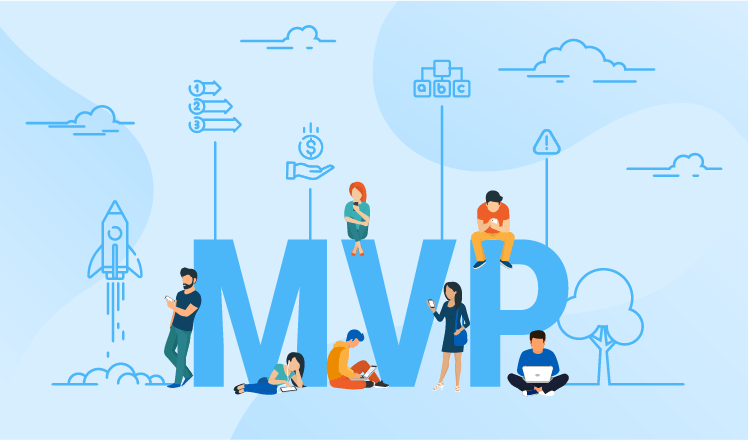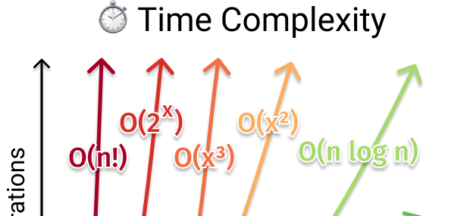If you aren’t embarrassed by your first product, you’ve launched it too late.
I stumbled into entrepreneurship by accident, unexpectedly finding myself managing a business for over two decades right from my kitchen table. As I delved into writing and began interviewing fellow entrepreneurs for my books, I realized that while I had acquired a wealth of knowledge, I didn’t always have the right vocabulary to describe what I had been instinctively doing. Concepts like white labeling, drop shipping, and MVPs were revelations to me, discovered many years after I had already been employing them.
Recently, someone asked me which aspect of their business they should focus on, and I felt comfortable with the phrasing but unsure about where to start with an answer. The truth is, there are countless facets to consider.
On one hand, the answer depends on the individual’s personal goals and aspirations in life. From a business perspective, however, it ultimately boils down to concentrating on what the customer desires most, which you can supply with ease and maximum profitability—developing your Minimum Viable Product (MVP). Yet, this process is often surrounded by misconceptions.
Let’s debunk a few of these myths.
Myth One: Only Highly Skilled Tech People Use MVPs Determining what your customers want stems from various forms of research, and one popular approach is the MVP. When I mentioned this to someone pondering which business path to pursue, they responded, “But I’m not a tech person.”
This is one of the misconceptions. MVPs are not limited to tech founders; the underlying principle is applicable to any business.
Allow me to share the story of an MVP in action. Once upon a time, there was a man named Nick who sought to purchase a specific pair of shoes in a particular size. Failing to find them at his local shoe shop, he wondered if others desired the same shoes and if he could buy and resell them online.
With virtually no investment, Nick built a basic website, approached a shoe store for product images, and used them on his online platform. When he received an order, he purchased and shipped the shoes. This approach required minimal investment and provided him with valuable market knowledge and research. Eventually, Amazon acquired the company he founded, called Zappos, for a staggering $1.2 billion, even though Nick had already left. His name was Nick Swinmurn.
Myth Two: The Origins Nick Swinmurn’s shoe-shopping venture took place in 1999, nearly a decade before Eric Ries published “The Lean Startup.” It’s a common myth to believe that Ries coined the term MVP.
However, what Ries did was bring the concept to people’s attention. The term MVP was actually coined by Frank Robinson, CEO of SyncDev Inc., in 2001, and it was later adopted by author Steve Blank. Blank developed a customer development method for small companies that lacked the extensive financial resources available to larger corporations.
Myth Three: What an MVP Is I have heard people describe MVPs as a launch strategy, but that fails to provide a comprehensive explanation. Additionally, it gives the impression that MVPs are exclusively meant for testing at the startup stage, which is not entirely true. MVPs can be used continuously to test products. Remember Nick’s story? An MVP serves as a tester for your idea with minimal investment. It should reveal market demand, identify the specific demand (in this case, the desired shoes), and determine if your selling method is effective.
Traditional market research involves asking customers questions, which yield varying degrees of honesty and self-awareness. With MVPs, you learn by observing customers in action—will they make purchases, and what do they buy? The data obtained through MVPs is both more accurate and more specific.
Steve Jobs once said, “You’ve got to start with the customer experience and work back toward the technology.”
Apple applied this principle to the iPhone, using a basic model to test if the core functionality worked—could people manage without a physical keyboard, and would mobile phones function effectively on the internet? It made no sense to develop apps and fancy features until those fundamental aspects were established. The core product must be validated first.
MVPs not only allow you to test your product idea inexpensively, but they also enable fast learning. This means you quickly discover what works and what doesn’t, bringing your product or brand to life rapidly. Your product must provide sufficient value and perform well enough to appeal to customers; otherwise, it is destined to fail.
There are two additional benefits. Firstly, you can generate revenue while you learn, although probably not enough initially. Our shoe salesman, for instance, initially experienced losses. However, as you progress, these losses can diminish because you gain more insight into your customers’ needs.
Mailchimp managed to bootstrap its way to success by offering a free version of its software to customers, with a more advanced model available through subscription. Furthermore, employing MVPs prevents you from investing a fortune in developing a product that will never sell. Lastly, MVPs help you build the foundation of your business, brand, or product, establishing your name in the market.
Myth Four: The Guarantee of Success One of the main reasons new businesses fail is a lack of market demand. MVPs aim to mitigate this risk, right? Like any method, they are not foolproof; their effectiveness depends on the starting point, the skills of the operators, their adaptability, and the utilization of the data collected.
The starting point is crucial. There is work to be done before reaching the MVP stage, and rushing into it risks wasting time and money. Before even considering an MVP, you must conduct initial research, study your competition, have a clear understanding of your core product or service, identify its unique differentiators, and examine the competition. You need some validation that your idea has market potential. If you haven’t done any of these preliminary steps, you are not ready for an MVP.
While the product itself can be basic and the marketing simplistic, data collection must be anything but basic. Many MVPs fail due to poor data collection. The entire purpose of the process is to gain insights into your customers, product, and website. Is your website user-friendly and appealing to your customers? Many entrepreneurs have confessed to me that, in their excitement to launch and their obsession with high-tech solutions, they neglect the importance of connecting with customers, a crucial aspect. They may even overlook the significance of effective calls to action and their ease of implementation.
On the customer side, your data collection should be designed to reveal the location of your clients, potential market segments, customer engagement patterns, expected conversion rates at each stage of the sales funnel, and customer acquisition costs. This information is essential but often challenging for startups to obtain accurately.
It’s possible that your product may not meet expectations. For an MVP to succeed, it must be basic, but that doesn’t mean it shouldn’t excite customers or outperform the competition. You must be open to the possibility that feedback might indicate that you should abandon the idea. However, it’s a delicate balance. Many entrepreneurs fall into the perfectionism trap, continuously refining the product based on every customer suggestion. This defeats the purpose of the MVP.
A common mistake is to ignore the data. Despite receiving valuable feedback, some founders choose to disregard it due to ego or obstinacy. In reality, within the MVP process, you must constantly learn, develop, and adapt. And if it turns out that the only thing customers desire is financially unviable, you must bravely accept that reality.
Myth Five: Only the Best Method Will Do Business methods have become a booming industry, with numerous complex theories on how to establish and run an MVP.
One claim you might encounter is that you must have a working prototype. When I started a furniture manufacturing business, I didn’t have anyone to make the furniture, let alone the funds to produce it. I created some poorly drawn designs, compiled them into shoddy leaflets, and sent them to people. A few designs had enough appeal to generate orders and launch the business.
In subsequent iterations, with slightly improved brochures, the pieces that never sold were discarded without ever being produced. It was a cost-free MVP, so to speak. Eventually, we did start creating prototypes, but more for capturing beautiful photographs than for refining manufacturing. This basic approach of testing, launching, and relying on customer feedback proved immensely valuable and sufficient to launch a business.
Innocent Drinks took a different approach. While still employed elsewhere, the founders were unsure if there was sufficient demand for their idea to succeed. They produced a large batch of their drinks and sold them at a small music festival. Next to their stall, they displayed a sign asking, “Do you think we should give up our jobs to make these smoothies?” with two bins labeled “yes” and “no.” The “yes” bin filled up, and they quit their jobs.
In the realm of technology, we can certainly improve processes. We can mine more data and obtain information faster. However, the complexity of gathering information in the digital age has also added layers to the marketing challenge. It’s not always true that more input yields greater output.
Always remember Reid Hoffman’s perspective: if you’re not embarrassed by your first product, you’ve launched it too late.




 How to Break from forEach in JavaScript?
How to Break from forEach in JavaScript?